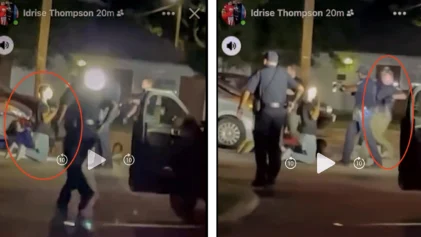
Donald Trump again lashed out at the media at his Phoenix rally. (AP Photo/Alex Brandon)
RENO, Nev. (AP) — Within a 24-hour span, President Donald Trump delivered one speech in which he tore into the media and members of his own party, and a second in which he called for national unity and love.
The about-face seemed to reflect the president’s real-time internal debate between calls for moderation and his inclination to let loose.
On Wednesday, the president spoke in measured tones and stuck to his prepared remarks as he praised veterans at an American Legion conference in Nevada as examples for a nation yearning to set aside its differences.
“We are here to hold you up as an example of strength, courage and resolve that our country will need to overcome the many challenges that we face,” he said.
The night before, the president cut loose in Arizona, defying instructions from his aides to stick to the script and angrily renewing his fight with the press over its coverage of his comments about the race-fueled violence in Charlottesville, Va.
The public push-and-pull in Trump’s message mirrors the internal dynamics at the White House, where new chief of staff John Kelly has organized and regimented the West Wing staff but has been unable to rein in the president’s tendency to veer off course.
The president’s speech in Reno was full of the calls for patriotism and national healing that would not have seemed out of the ordinary had they been uttered by previous occupants of the Oval Office.
But his rally in Phoenix on Tuesday night was uniquely Trump. He opened his remarks with a talk of unity but quickly erupted in anger, blaming the media for the widespread condemnation of his response to the violence in Charlottesville at a protest organized by white supremacists.
Trump read from his three responses to the racially charged violence, becoming more animated with each one. He withdrew from his suit pocket the written statement he’d read the day a woman was killed by a man who had plowed a car through counter-protesters. But he skipped over the trouble-causing part that he’d freelanced at the time: his observation that “many sides” were to blame.
That, as well as his reiteration days later that “both sides” were to blame for the violence that led to the death of Heather Heyer and two state troopers, led Democrats and many Republicans to denounce Trump for not unmistakably calling out white supremacists and other hate groups.
By the time he arrived at the American Legion conference, Trump seemed more congenial. He even thanked Sen. Dean Heller, a Nevada Republican with whom he has openly and repeatedly feuded. He discussed his early efforts to restructure and improve the Department of Veterans Affairs.
Later in the speech, Trump said Americans aren’t defined by the color of their skin, the size of their paycheck or their political party.
Since Kelly took over last month as chief of staff, he has ousted lightning-rod chief strategist Steve Bannon and hard-charging communications director Anthony Scaramucci while limiting dissenting voices, restricting access to the president and steering the president toward a desired outcome on key decisions.
He has urged Trump to more closely follow a game plan. But Trump’s broadside against the “damned dishonest” media, which he says is out to get him, was one of several detours he took from remarks prepared for the Phoenix rally. Trump unabashedly acknowledged that his own advisers had urged him to stay on message, and that he simply couldn’t.
His diatribe against the press wasn’t in his prepared remarks, according to two people familiar with the plan but not authorized to speak publicly about the president’s decision.
Though he was subdued in speaking to the veterans, Trump often resurrects his free-wheeling 2016 campaign style when in the comforting presence of his most fervent fans. He flings insults at perceived enemies and meanders from topic to topic. In Phoenix, his ease was apparent. As he discussed his responses to Charlottesville, Trump interrupted himself to add: “I didn’t want to bore you. You understand where I’m coming from. You people understand.”


